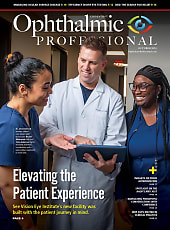Since the FDA approved intravitreal complement inhibitors for geographic atrophy (GA), the role of these treatments in clinical practice has been debated in the retina community, specifically regarding safety, efficacy, and patient selection. Some specialists are hesitant to offer treatment because their clinics are already overburdened with patients who require intravitreal injections for neovascular age-related macular degeneration (nAMD) and other retinal vascular diseases.
Unfortunately, I have seen the natural progression of GA in many of my patients over the course of my career and have witnessed declines in visual function that impacted their overall lifestyle and health. Ultimately, some patients decide to go forward with treatment and some do not, but I find it important to educate each patient about the disease process and their options.
I start by talking to patients about what GA is and how it can affect their vision as it progresses over time. I specifically ask if they are noticing increased problems with reading or blind spots in their vision. I show them their serial photos on the computer so they understand the rate of growth. I then tell them that they have several options regarding treatment. Having their family in the room and involved in the discussion is helpful because it is easy for patients to feel overwhelmed and experience information overload when they are alone.
I tell patients that the FDA-approved therapies require treatment visits every 1 to 2 months. It is important that they understand treatment can slow the progression of disease, but it will not bring back lost vision or completely halt progression. The benefits of treatment build over time, but they require commitment from the patient and their family. There are potential side effects of treatment, including an increased risk of conversion to nAMD, and a small risk of infection and inflammation that can, in rare cases, lead to vision loss. I then give them a brochure about the medications and tell them to go home, think about it, read over the literature carefully with family members, and come back with questions.
For patients who are enthusiastic, I make appointments for them to come back in 1 month with an insurance pre-authorization. If a patient is unsure, I introduce the concept of clinical trials to them. If they are still unconvinced about any type of treatment, I still give them a brochure about the FDA-approved medications and have them return for a 6-month appointment and more imaging.
We are incredibly lucky to have emerging treatments for previously untreatable or poorly treated diseases. I am excited about potential future therapies that may provide improved results or decreased treatment burden, but I am happy to be able to offer the current therapies to my patients with previously untreatable GA.
This editorial content was supported via unrestricted sponsorship.









